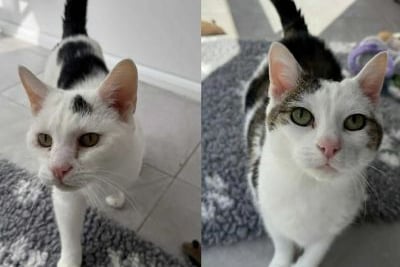‘Trigger stacking’ is a concept used in the animal behaviour world that refers to a build-up of multiple stressors that eventually lead to a significant reaction.
In a dog this could result in aggression, or, conversely, a complete lack of self-confidence; and in a cat it could cause a range of issues that an owner may not associate with stress. Some of these issues are physiological ones, and some are psychological.
The first of the physiological signs of stress is cystitis, or feline idiopathic cystitis (FIC).
Signs include straining to urinate, passing blood in the urine and house soiling. The second sign is feline influenza (or feline calicivirus, FCV, or feline herpes virus, FHV) which is caused by a suppression of the immune system, and which results in a cat having respiratory problems.
And the third is feline inflammatory bowel disease (FIBD) which causes a cat to vomit, go off their food, and have diarrhoea.
Psychological reactions to stress include aggression, acute shyness, house soiling, and over grooming.
Animal behaviourists believe that cats feel emotions and that they are motivated by feelings of joy, fear, anxiety, frustration and depression, and that negative emotions elicit a stress response.
But cats are also very good at hiding their stress, until the triggers become over-stacked and result in a big stress response. Which is why a cat owner needs to understand what lower level triggers affect their cat, so that they can take remedial action.
The presence of other animals in a household is a frequently observed stress trigger. Rather than wait for an obvious sign of strained, fear-based fight or flight behaviours, an owner should assess a cat’s relationship with other animals through the presence of positive behaviours.
These include mutual grooming, sleeping alongside each other, and happily eating together.
Visiting a vet is not one singular stressful experience for a cat, it’s lots of little ones: being confined in a cat carrier, travelling, being in a waiting room alongside other animals, experiencing strange smells, having a vet prod and poke them, and possibly being injected with a needle.
Cats who don’t like being handled can appear to be ‘good’ whilst at the vets, but this is likely to be due to the suppression of behaviours rather than a cat being happy with, or accepting of, the experience.
Make sure you cover your cat carrier with a towel or blanket, and place some of the cat’s bedding inside it so that they are reassured by a familiar smell.
Whereas a visit to the vet may be unavoidable, unless your vet can come to you, an owner can take steps to reduce stress ‘stackers’ by ensuring their home is set up to meet a cat’s needs.
A cat should be provided with a safe place where they can hide, and positive, consistent human-cat social interaction where children respect the cat’s boundaries. In multi-cat, or multi-pet, households cats should be able to eat, toilet, sleep and play in separate areas.
Living in a cattery environment is stressful for most cats, although we do our best to minimise this by, for example, providing hiding boxes and plenty of bedding.
Of course, the best solution is to rehome our cats as quickly as possible.
We have lots and lots of kittens with us at the moment, which means that older cats like Millie and Mollie (both aged 13) are being overlooked.
They came to us because they had issues with other animals in their home, which was stressful for everyone, and they simply need a quieter environment where they can live together and feel safe and secure.
These sweet sisters are in good health, and they have always lived as indoor only cats and so they would suit someone whose house is near a busy road, or who lives in an upstairs apartment.


-and-Ewan-Macfarlane-(Torvald)-during-rehearsals.jpeg?width=209&height=140&crop=209:145,smart&quality=75)
.jpeg?width=209&height=140&crop=209:145,smart&quality=75)
